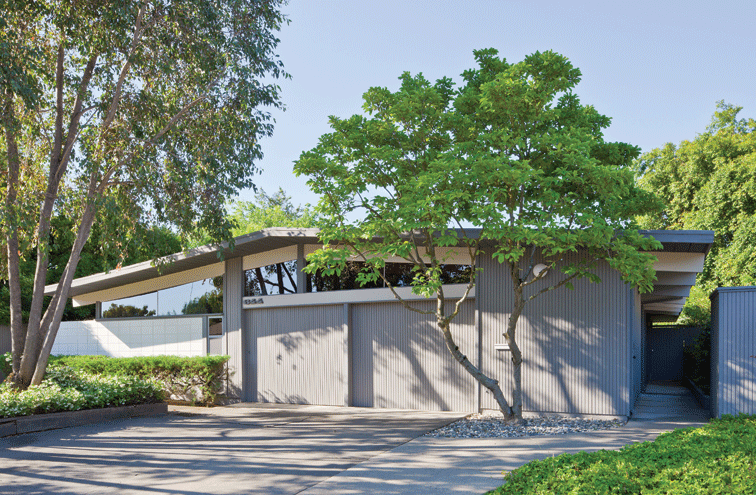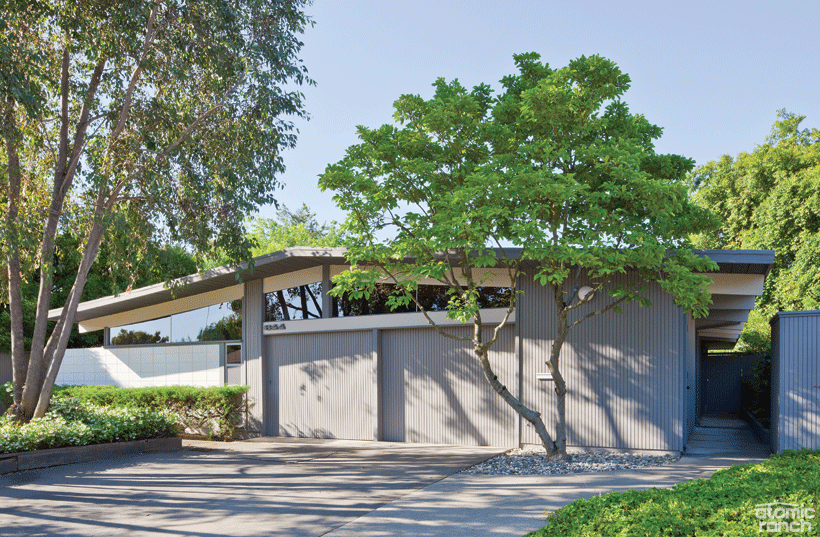
The story ends with a 1955 Sacramento Eichler home. It begins with the DCWs. It was 2004 and, post-divorce, Dane Henas was in need of some dining chairs. “A friend who was a big Eames and Nelson collector said there were some DCWs on eBay,” Dane recalls, referring to the Eameses’ ‘Dining Chair Wood’ in shorthand. “I bought those and thought I was all set, but then I needed a table.”
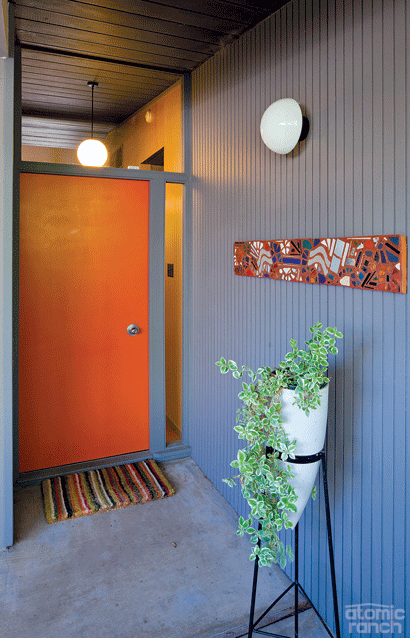
Adventures in Authenticity
After more collecting, he learned of Eichler homes in Sacramento. Then after a year and a half process, Dane closed on a 1955 Eichler. Early on, Dane decided he wanted his interior to be as authentic as possible and noted the archetypal elements remaining in his and neighbors’ homes. He pored over blogs and drove 90 miles to view an original-condition Eichler. Then it was a matter of mentally processing what was original to his home versus other Eichlers, and was that material still available and a viable, high-quality product.
For instance, he noted bloggers’ complaints about the cave-like nature of homes with dark mahogany paneling and cork floors, but didn’t personally find those elements made the Palo Alto model dungeon-y. The paneling in his own house was mostly painted, except in a couple of bedrooms where the original light pickled finish remained. Dane decided to replace all of the painted paneling and matched the authentic finish with a custom concoction of Cabot stains—the same brand Eichler used. The guys at the lumberyard thought he was nuts to stain and finish today’s lesser-grade mahogany paneling, a product they considered suitable for warehouse wall sheathing. The ceilings were a similar conundrum. They too had been painted, and sandblasting or stripping was out.
“I realized Eichler ceilings were dark for a reason: I’ve seen homes with white ceilings and the unevenness and gaps between the 1″ x 6″ tongue-and-groove redwood boards is really distracting. If it’s dark, that covers it up. Otherwise, sometimes people take about 1,000 pounds of caulk [and seal the gaps].”
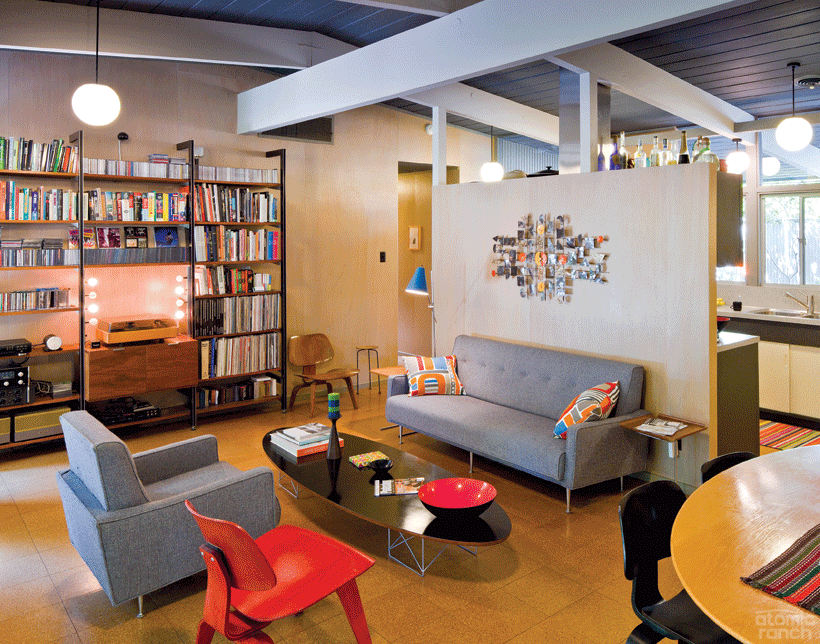
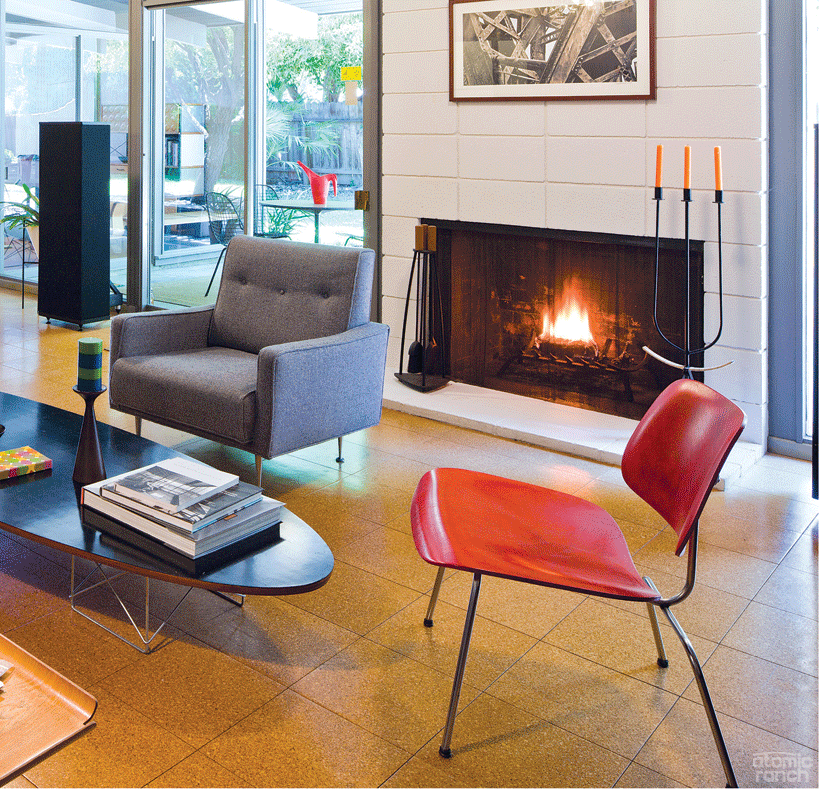
Decisions, Decisions
While 1955 Eichler homeowner Dane Henas did his homework about period authenticity, it was a balancing act when it came to refreshing the interior for both form and function. Choices inside are a mix of Authentic 2.0 and I’m-getting-something-better-’cause-it-exists. Dane found a company that makes virtually identical 12″ cork tile with beveled edges, but thicker and of higher quality than the Armstrong originals he found under the living room carpet. For the bedrooms, he chose Azrock vinyl tile in a similar pattern to ’50s asbestos tile, but in 12″ squares instead of 9.” Determining that the smaller size was too expensive and hard to find, he installed the vinyl tile wrong side up, as he preferred the pattern on the back.
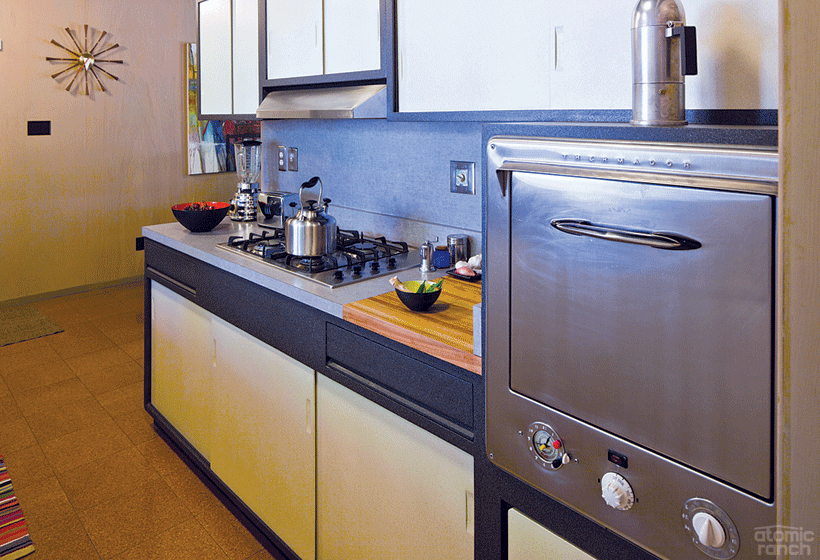
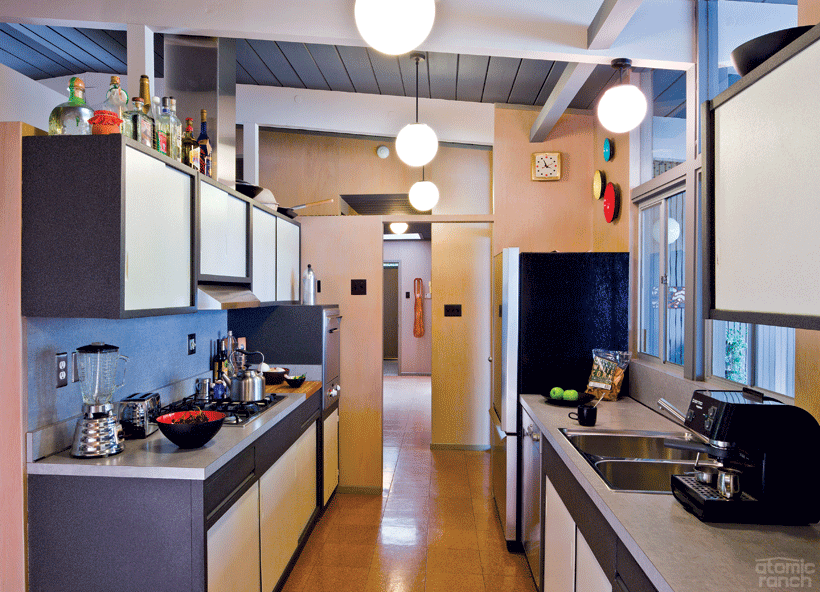
When it came to the kitchen, Dane thought that none of the IKEA, high-end custom or Danish modern cabinetry he’d seen worked as well as the original design. “Eichler kitchen cabinets were really minimal, pretty unique and go with the aesthetic of the house,” he says, “but most people have taken them out and put them in their garages. They were made of really cheap plywood, with recessed finger holes in the Masonite sliders and no hardware.”
His kitchen cabinets were still in place, but the original speckled Zolatone finish had been painted over. Dane decided to go back to Zolatone, which he found at an automotive paint supply store and which required a special applicator.
“The worst thing about it was the smell—it probably broke some OSHA laws—and later I switched to Rustoleum American Accents ‘Stone’ spray paint for my bathroom cabinet doors. The Zolatone covers up that these are the cheapest plywood cabinets imaginable—it filled in splits and gaps. And it was brilliant marketing—plastic-coated cabinets that are easy to keep clean; that was Eichler, they had the best marketing materials.”
Dane called in a pro to install a gas line for a Miele cooktop, but kept the Thermador oven and found a repairman for its Telechron clock motor. He installed new Formica counters and backsplashes in a variegated linen-weave pattern.
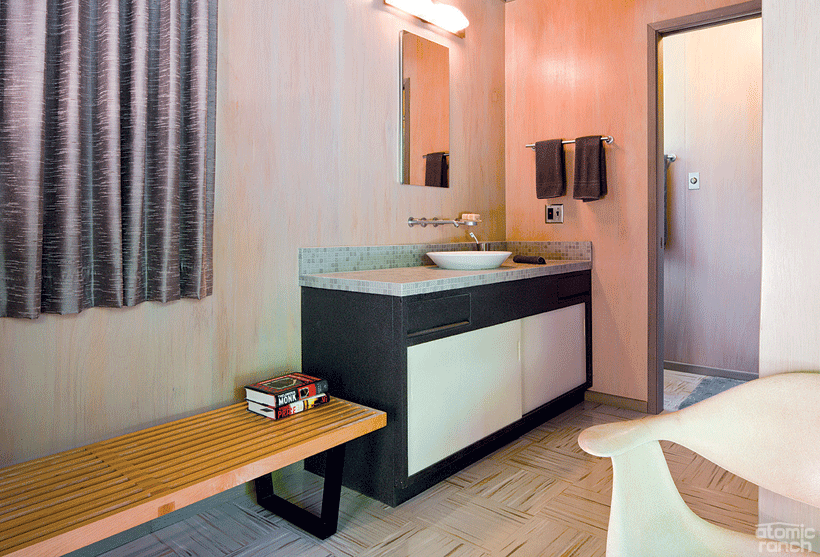
The baths are where he took more liberties. Laminate counters and showers lined with plastic or metal embossed-tile panels laid over mahogany paneling—yes, paneling inside the shower enclosure—were the original materials. His baths had been upgraded to 4″ tile, which he used as the substrate for 1″ mosaic glass tile. He chose a Kohler vessel sink that reminded him of an Architectural Pottery piece, and didn’t care for the generic light fixtures Eichler used, so selected one he thought looked like a Nelson Bubble Lamp.
After spending a year living under tarps while he worked nights, weekends and early mornings on re-creating an authentic-looking house, Dane is glad he did it his way. “It’s too important for all of this original stuff to go away,” he says. “But it didn’t have to be 100 percent purist.
“Peeling back the paint, I thought, These people were really sharp; they had all this stuff dialed in and put a lot more care into things like that than in a more conventional ranch house. I appreciate and like to be reminded of that by living in it. It still looks very contemporary—not at all like a poodle skirt.”

